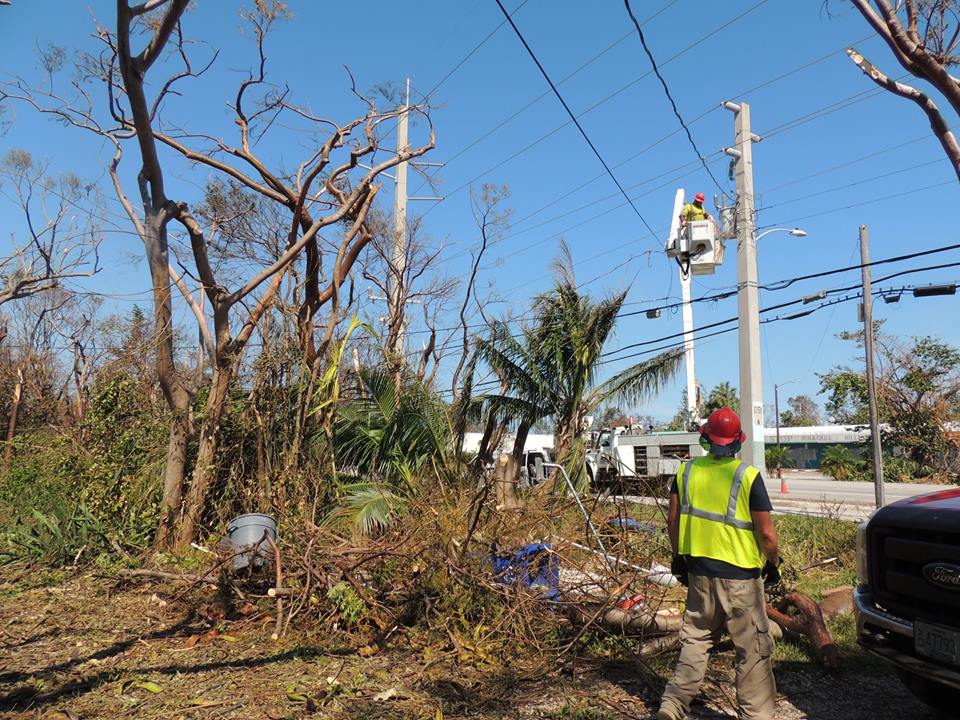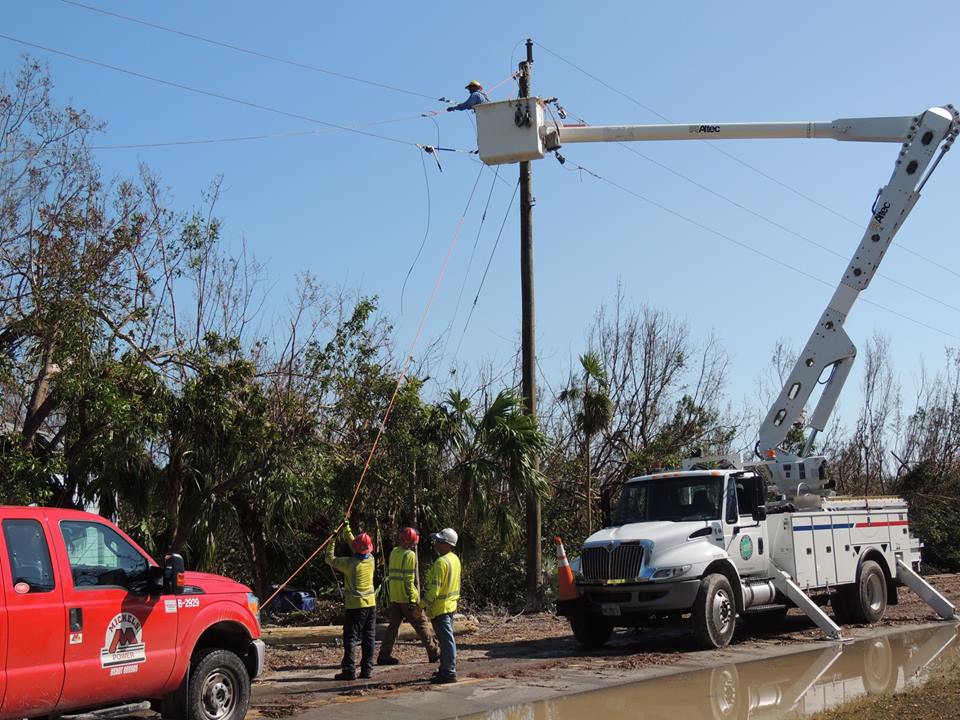
With communications to the outside finally restored, the CEO of the Florida Keys Electric Cooperative is explaining how the co-op’s system stood up to Hurricane Irma, while adding that some of his employees suffered major property losses.
Scott Newberry, CEO of the Tavernier-based co-op, said restoration is proceeding well, thanks to more than 50 distribution contract crews, two transmission contract crews and 22 tree trimming contract crews. Power has been restored to about 12,500 members, with all critical facilities and most grocery stores back on the grid.
However, three employees lost their homes, while others have some degree of flood and wind damage to their residences, he said. Just under 20,000 members remain without electricity.
“I don’t know when all homes able to receive electric service will have it,” said Newberry. The co-op had been largely cut off from external communications because it lost cellular, landline and internet service from early Sept. 11 to late Sept. 13
“We hope to have the bulk of members back in service by the end of the weekend, then will have to shift our focus from repairing the big stuff that gets lots of people back on at once to the slow slog of replacing service drops and transformers that restore service to a single home or just a very few homes at one time.”
In an email correspondence with NRECA’s Derrill Holly, Newberry described the impact of the hurricane and the process it will take to bring the Keys back to a “new” normal.
The system worked well: During the event, our transmission system stayed hot from Florida City to Tavernier. Our Jewfish, Key Largo and Tavernier substations remained energized throughout the storm as well. A few distribution feeders originating out of those substations relayed out but several stayed in, which meant that a few thousand members in the Tavernier and Key Largo areas never lost power during the storm. The transmission circuit from Tavernier through Marathon to Key West relayed out Sunday, which put everyone south of Mile Marker 86 in the dark.
Riding out the storm: Most of our employees evacuated the Keys prior to Irma’s arrival. Twenty-five employees and eight dependents sheltered in our Tavernier operations center. Five employees sheltered in our Marathon district office. The Tavernier facility never lost electric service. The Marathon district office lost service when the transmission line relayed out.
Marathon sat in the northeast quadrant of the eye wall for several hours and really took the brunt of the storm. Besides wind, that area looks like it had the most storm surge.

Not as bad as feared: There is no widespread destruction of homes or neighborhoods. Homes along the ocean side of the islands did experience significant flooding in some areas, though.
Infrastructure held up well also. No bridges were damaged or washed out. Only two sections of U.S. 1 were damaged, but both were quickly made passable. Water service took a major hit. It was completely unavailable for a period of time but was restored to the upper Keys pretty quickly. Marathon started getting some water service back yesterday. The lower Keys and Key West are still essentially without water, electric or sewer service, but the electric utility [non co-op] is making progress down there.
A hardened system: Our preliminary damage assessment found that the transmission line from Tavernier to Marathon had relayed out because of some debris in the line that was easily cleared. We had the entire transmission system energized to Marathon on Monday. We did not lose a transmission pole, did not have any broken transmission insulators and did not drop any transmission conductor. Basically, no damage at all to our transmission system.
We have some broken distribution poles here and there, but not nearly as many as I expected. It looks like the majority of our distribution system repairs will be replacing insulators, re-sagging wire, and replacing fuses and service drops.
Feeding the helpers: We began our restoration efforts Monday morning and are now in full swing. We fed more than 250 meals for breakfast and dinner service out of our Tavernier facility’s commercial kitchen each day starting Monday and have continued to do so through today [Sept. 14]. The upper Keys base camp kitchen and dining facilities should be fully operational after today and all feeding, housing and bathing functions will take place there after today. The base camp located in Marathon is already fully operational and all feeding, housing and bathing facilities were available there yesterday.
Long-term work: The Marathon area will be slower to restore because many areas flooded. Houses will have to be inspected in those areas to make sure they are able to safely receive electric service before we can turn them back on. We plan to keep working daylight to dark every day until the job is complete.